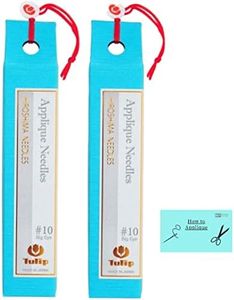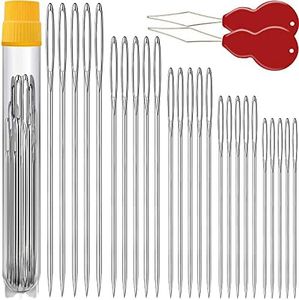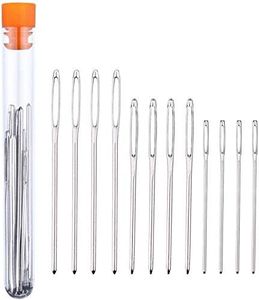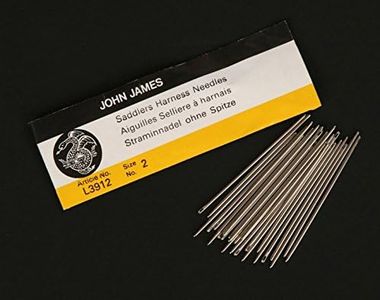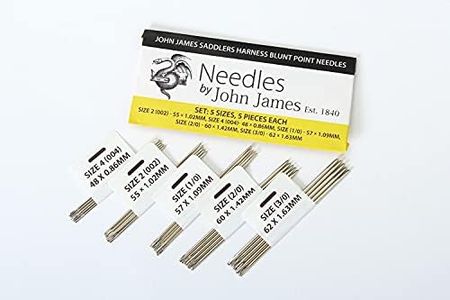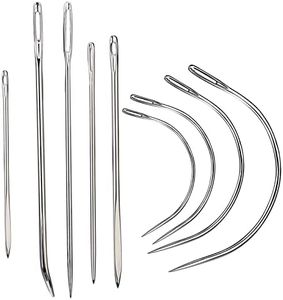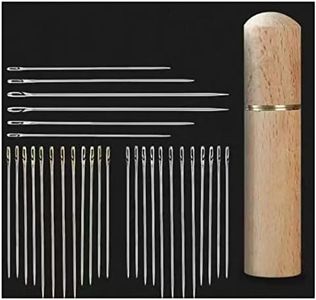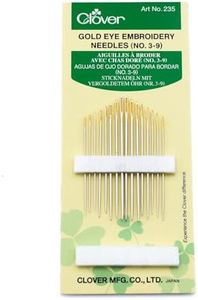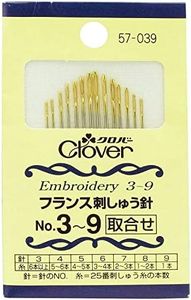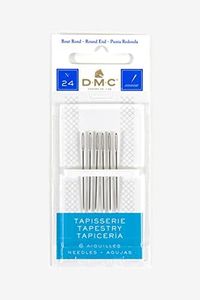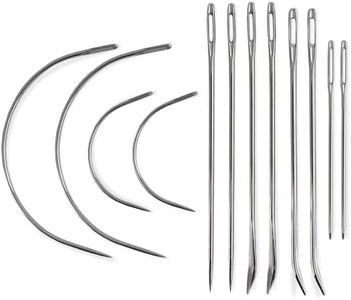We Use CookiesWe use cookies to enhance the security, performance,
functionality and for analytical and promotional activities. By continuing to browse this site you
are agreeing to our privacy policy
10 Best Hand Sewing Needles
From leading brands and best sellers available on the web.Buying Guide for the Best Hand Sewing Needles
Choosing the right hand-sewing needle can make your sewing projects easier and more enjoyable. The ideal needle depends on the type of fabric you're working with, the kind of stitch you need, and your personal comfort. Paying attention to the main features of needles will help you sew more effectively and avoid issues like snags, broken needles, or uneven stitches.Needle SizeNeedle size refers to both the length and thickness of the needle. Smaller numbers usually mean thicker and shorter needles, while larger numbers indicate thinner and longer needles. This matters because heavier fabrics like denim need a stronger, thicker needle, while delicate fabrics like silk require a finer, thinner needle so you don’t damage the fabric. Choose a smaller (thicker) needle for tough materials and a larger (thinner) one for lightweight materials. Thinking about the material you’ll use most often is a good way to pick the right size.
Needle TypeThere are many types of hand-sewing needles, such as sharps, embroidery, quilting, darning, and tapestry needles. The type refers to the needle’s point, length, and the size of the eye. Sharps are all-purpose needles, while embroidery needles have larger eyes for thicker threads. Select the type based on your specific project: embroidery for decorative work, tapestry for large-eye and blunt tips (useful for loosely-woven fabrics), or quilting for layered fabrics. Think about what kinds of projects you do most—general sewing needs sharps, craft work may need embroidery or tapestry needles.
Needle EyeThe needle’s eye is the hole where the thread passes through. A larger eye is easier to thread, especially for thicker threads or if you have trouble seeing small spaces. However, a large eye can weaken the needle and may cause damage to delicate fabrics. For fine fabrics and threads, a small eye keeps stitches neat and the fabric safe; for embroidery or thicker threads, a larger eye is more practical. Consider your usual thread thickness and your comfort with threading needles when choosing eye size.
Point TypeSome needles have sharp points and others have blunt or rounded points. A sharp point pierces tightly woven fabrics easily, making it perfect for most general sewing tasks. Blunt or rounded points are better for loosely woven or knitted fabrics since they won’t split threads or cause snags. Pick a sharp needle if your material is close-knit or sturdy, and a blunt/rounded one for knits or loose weaves.
Needle LengthNeedle length can affect comfort and control. Shorter needles offer more precision and are good for small, detailed work, while longer needles cover more distance with each stitch and are easier for larger projects like quilting. Think about the type of stitches and the size of projects you usually take on: for detailed craft, a shorter needle is preferred; for larger areas or quilting, a longer one provides efficiency.
